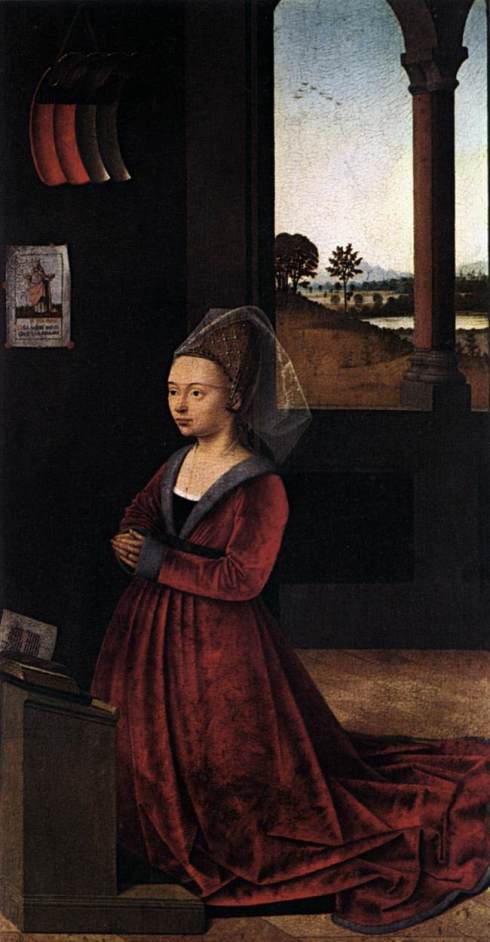One of the most useful colors in an artist’s palette is one of the last colors anyone else would think. Only its spooky name would incline your attention towards it. Caput mortuum, which means dead head or death head, is made of haematite–iron oxide (in fact there are several extremely similar colors made of the same pigment but with slightly different hues and names–particularly mars violet and Indian red—but we will stick to talking about caput mortuum because that’s the variation I use). This unpromising rust color possesses a protean mutability–it could be red, brown, orange, or violet depending on the context. Although it can stand on its own as a focus of attention, caput mortuum is very easy to paint into a network of subtle shadows: many painters use it for shadowed flesh or as land cast in darkness (after all a person’s flesh and the red clay of a landscape both take their ruddiness from iron).
Though not a flashy color, caput mortuum has a dignity and a beauty to it. In the middle ages and Renaissance, painters used it to paint the robes and clothing of eminent monastic religious figures and of patrons & donors (ie the people actually paying for the painting). Oftentimes when looking at a religious painting, a viewer will notice that Jesus, Mary, and Saint Peter–resplendent in gold, white, blue, and red—are joined by an unknown pair of merchants wearing caput mortuum. These two often have the most realistic and beautifully painted faces in the painting–it is difficult to say what Jesus really looked like but even the most money grubbing burgher knows his own face!
Although there is something somber about the deep color of caput mortuum, its name does not come from an obvious association with blood and corpses. In addition to meaning “dead head” the Latin phrase also means “worthless remains” and it was used by alchemists to describe the inert residue left over from a chemical reaction. Apparently this by-product was often a rusty violet color. Alchemists used a (very) stylized skull to denote the oxidized left-overs.
However it’s more evocative to imagine the pigment being named after a death’s head. The concept lends art a much needed touch of operatic dark magic.






4 comments
Comments feed for this article
March 26, 2014 at 6:09 PM
fereidoon
I have been wondering about the purplish pigments used in both Italian and Northern painting of the period. if you could point to the source of pigment analysis for the above pieces, especially the wife of a donor by Petrus Christus, I would appreciate it.
September 25, 2017 at 5:27 AM
Mrs Wendy hambling
Do they make this colour in acrylic paints?
February 7, 2021 at 7:33 AM
Thomas Plum
https://www.kremer-pigmente.com/en/shop/pigments/iron-oxide-pigments/48710-caput-mortuum-dark.html
March 11, 2024 at 8:31 AM
San Juan Bautista (en la Masoneria) – masonerialibertaria
[…] https://ferrebeekeeper.wordpress.com/2011/07/08/caput-mortuum-violet/ […]